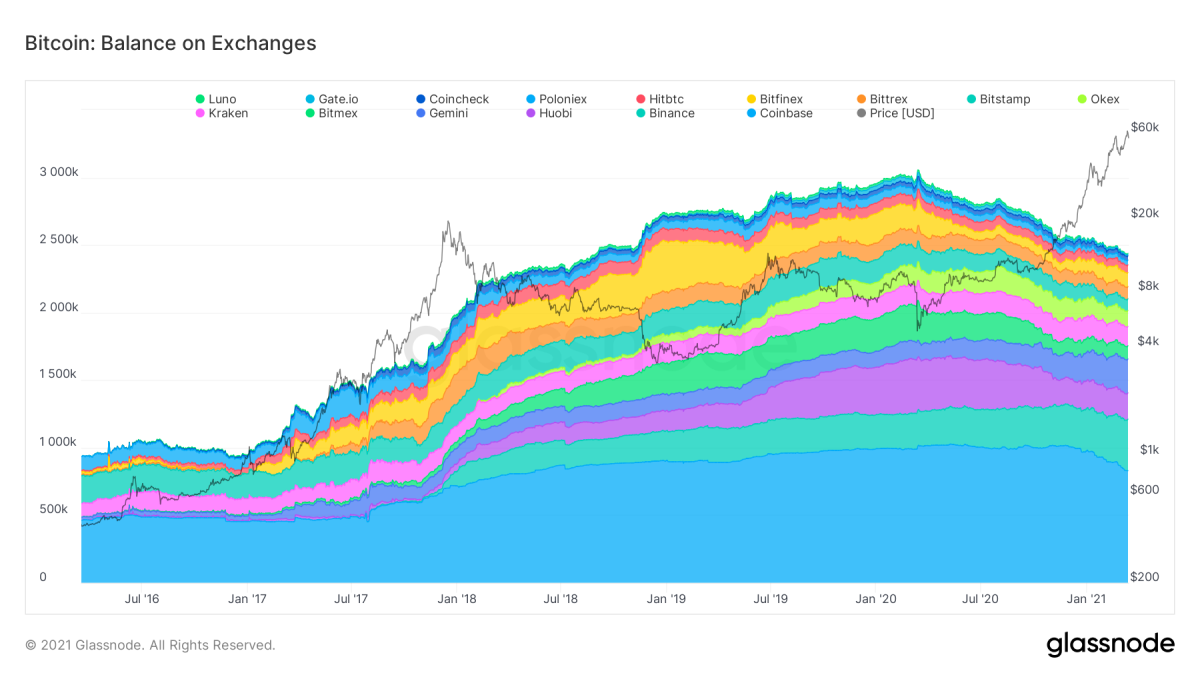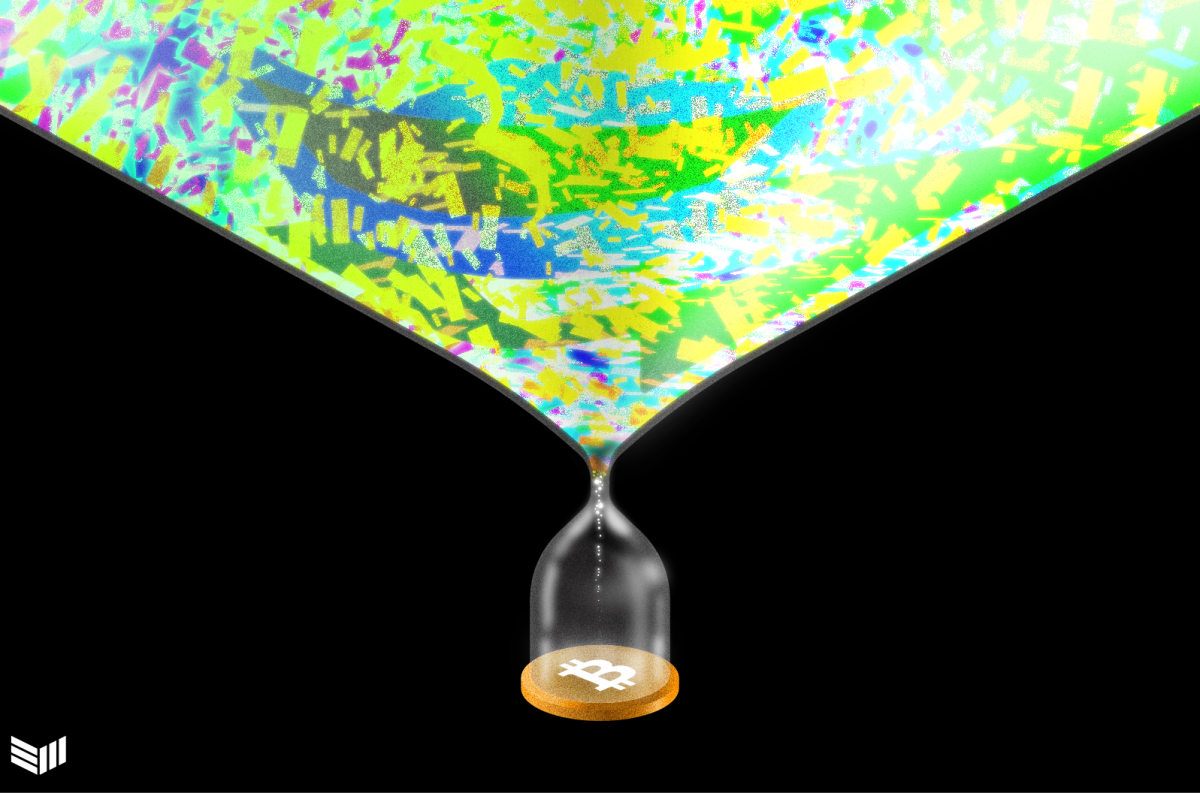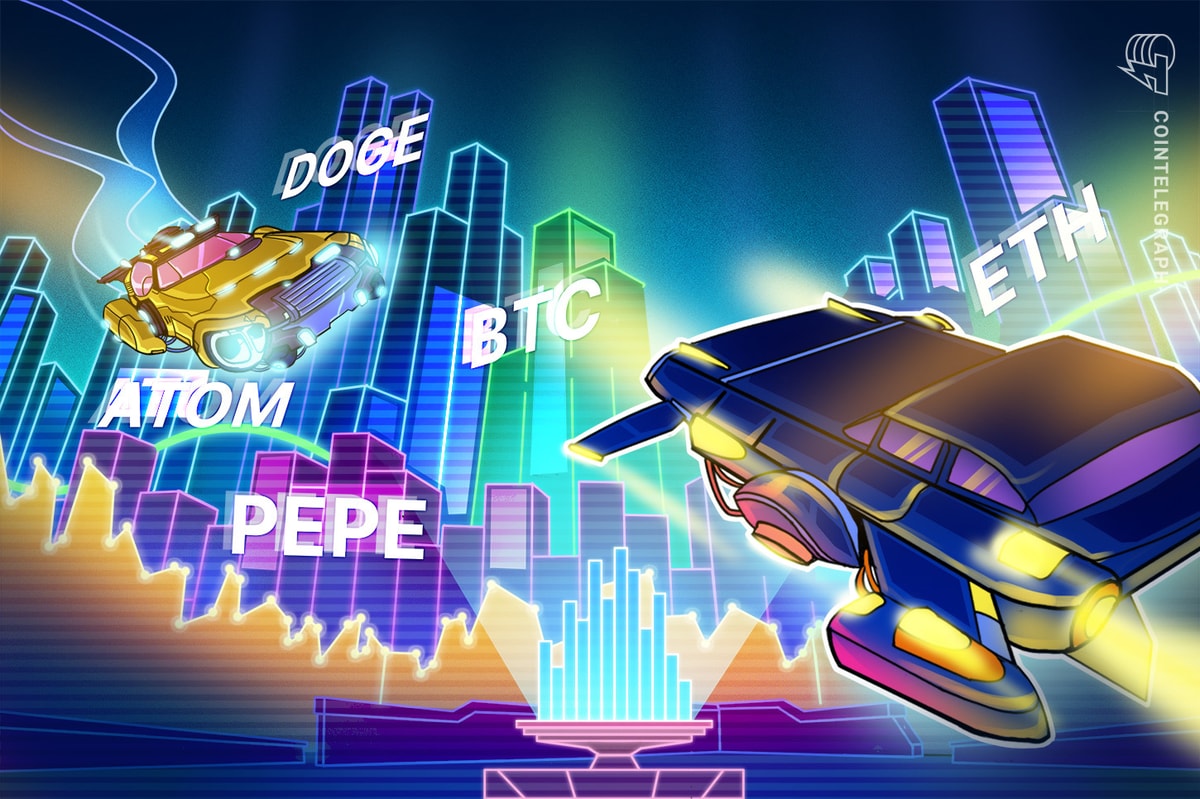The Bitcoin black hole has absorbed $1 trillion of monetary energy in only 12 years. As the legacy financial system nears the event horizon, BTC's gravitational pull grows stronger. Quadrillions of dollars of monetary energy will soon be compressed into 21 million bitcoin — the singularity. What comes out on the other side of the wormhole, nobody knows.
Many Bitcoiners believe this will take place, but have you actually run the numbers? It is impossible to know exactly how this will unfold, but by running some of the numbers we can get a better understanding of how dramatic this event will be. The math in this article is truly mind boggling.
To begin, it is important to understand that over 88 percent of all bitcoin that will ever exist have already been put out into supply. Through subsidy halvings, the flow of new coins being introduced into circulation via mining is cut in half every four years. The most recent supply halving was in May 2020, and will occur again sometime in 2024. With that being said, those roughly 18.6 million coins (that have already been created) have absorbed $1 trillion of monetary energy. Many of these coins have either been lost or moved into cold storage, never to resurface. As demand for bitcoin exponentially increases, the entire legacy financial system will need to be condensed into the remainder of coins that are available to be bought.
According to Glassnode, there are roughly 2.4 million coins currently up for sale on exchanges.

The entire global financial system will need to be condensed into those coins, in addition to the final 2.4 million coins to be created over time between now and the year 2140.
There is roughly $2.1 quadrillion of monetary energy in the world, a number that is drastically increasing. If hyperbitcoinization were to occur right now, this $2.1 quadrillion must be compressed into the 2.4 million bitcoin left on exchanges. Quadrillions are massive numbers that no one can reasonably wrap their head around, so let’s break this down to some smaller examples:
Disclosure: These numbers change as price rises, but the price at the time of this writing, used for these calculations, was $57,000.
The S&P 500 is currently capitalized at $31.6 trillion or, in bitcoin terms, 554,385,964 BTC!
The entire fixed-income market is currently capitalized at roughly $129 trillion or, in bitcoin terms, 2,263,157,000 BTC!
The entire global real estate market is estimated to be worth $380 trillion or, in bitcoin terms, 6.6 billion BTC.
In total, between just the S&P 500, fixed-income and real estate markets, they are all capitalized at a whopping 9.354 billion BTC. As mentioned, there are only 2.4 million bitcoin left to be bought on exchanges.
Phrased another way, 9.354 billion-bitcoin-worth of monetary energy must be compressed into the mere 2.4 million bitcoin up for sale.
If Apple was to step in right now and put merely 5 percent of its cash ($9.55 billion) into bitcoin, it would buy up over 14 percent of supply on exchanges at current prices. In other words, it would gobble up Coinbase’s current order books from now to $100,000 bitcoin prices, 18 times over!
If Microsoft was to step in and put merely 5 percent of its cash ($7 billion) on hand into bitcoin, it would buy up 122,000 bitcoin — far more than MicroStrategy’s holdings, which consist of its entire balance sheet and convertible debt issuances. Once the big boys step in, it is a whole other ball game.
This black hole effect will also be accelerated by the increase of “risk-free” yields that can be generated by arbitraging the difference between spot/future bitcoin prices (also known as cash/carry). These spreads will only widen as bitcoin’s price and volatility increase. For a more detailed explanation on this concept, please reference my previous article, titled “Contango and Overcollateralization.”
As a rule of thumb, equity returns equal price-to-earning ratios (PEs) divided by one. If these free/open market bitcoin yields (that are a byproduct of hyperbitcoinization) blow out to 20 percent, that would mean equity PEs would need to drop from more than 34 to substantially below five to account for risk premium. This would equate to a 75 percent to 80 percent stock market correction.
The process of hyperbitcoinization will be a mind-melting event. Of course, no one can be fully mentally prepared for. To illustrate the scarcity of one bitcoin, dividing all of the global land by 21 million would mean that one bitcoin would be equivalent to 6,000 acres of land. The spending power that just one bitcoin will hold is incredible and cannot be understated.
This is a guest post by William Clemente III. Opinions expressed are entirely their own and do not necessarily reflect those of BTC Inc or Bitcoin Magazine.












